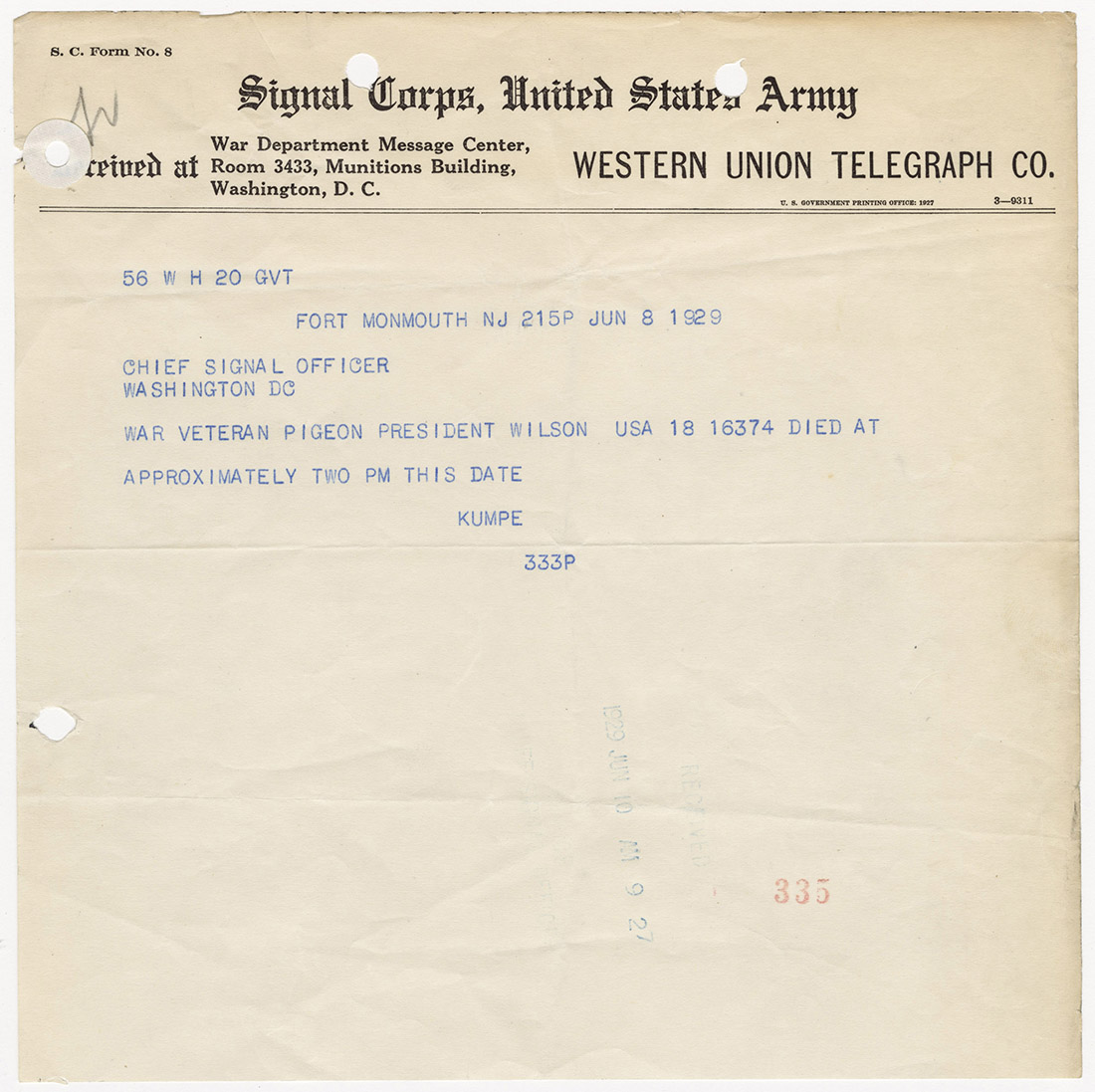
A Hero Pigeon of World War I
Winter 2009, Vol. 41, No. 4 | Pieces of History
When the United States entered World War I in 1917, the Army’s Signal Corps brought along a contingent of new messengers to carry vital information between the front and headquarters—pigeons. European armies had long had success with pigeon messengers, and Gen. John J. Pershing requested that pigeon specialists be commissioned into the U.S. Army. Over the course of the war, more than 15,000 birds were sent to the American Expeditionary Forces.
The bird pictured here, named President Wilson, was one of the hero pigeons of the war. His file in Signal Corps records notes that he was “a powerful bird, of remarkable vitality and rapidity of flight.” President Wilson was bred in France and began his Army career with the Tank Corps. During the St. Mihiel operation he distinguished himself “because of splendid work when all other communications failed.”
He was transferred to I Corps Signal, which was engaged in the Meuse-Argonne offensive. On November 5, 1918, he was released into heavy artillery action, carrying an important message. His record notes that “this game little soldier came thru fire and fog,” successfully reaching his destination even though one of his legs was shot off and his breast was pierced by a bullet. The message tube was hanging by the ligaments of the torn leg. Most remarkably, the injured President Wilson reached his destination 40 kilometers (25 miles) away in 25 minutes.
President Wilson returned to the United States after the war and spent his retirement in the pigeon lofts at Fort Monmouth, New Jersey. He lived to be 11 years old and died on June 8, 1929. The feathery war veteran was stuffed and mounted for display in the museum at Fort Monmouth and was later donated to the Smithsonian Institution.

